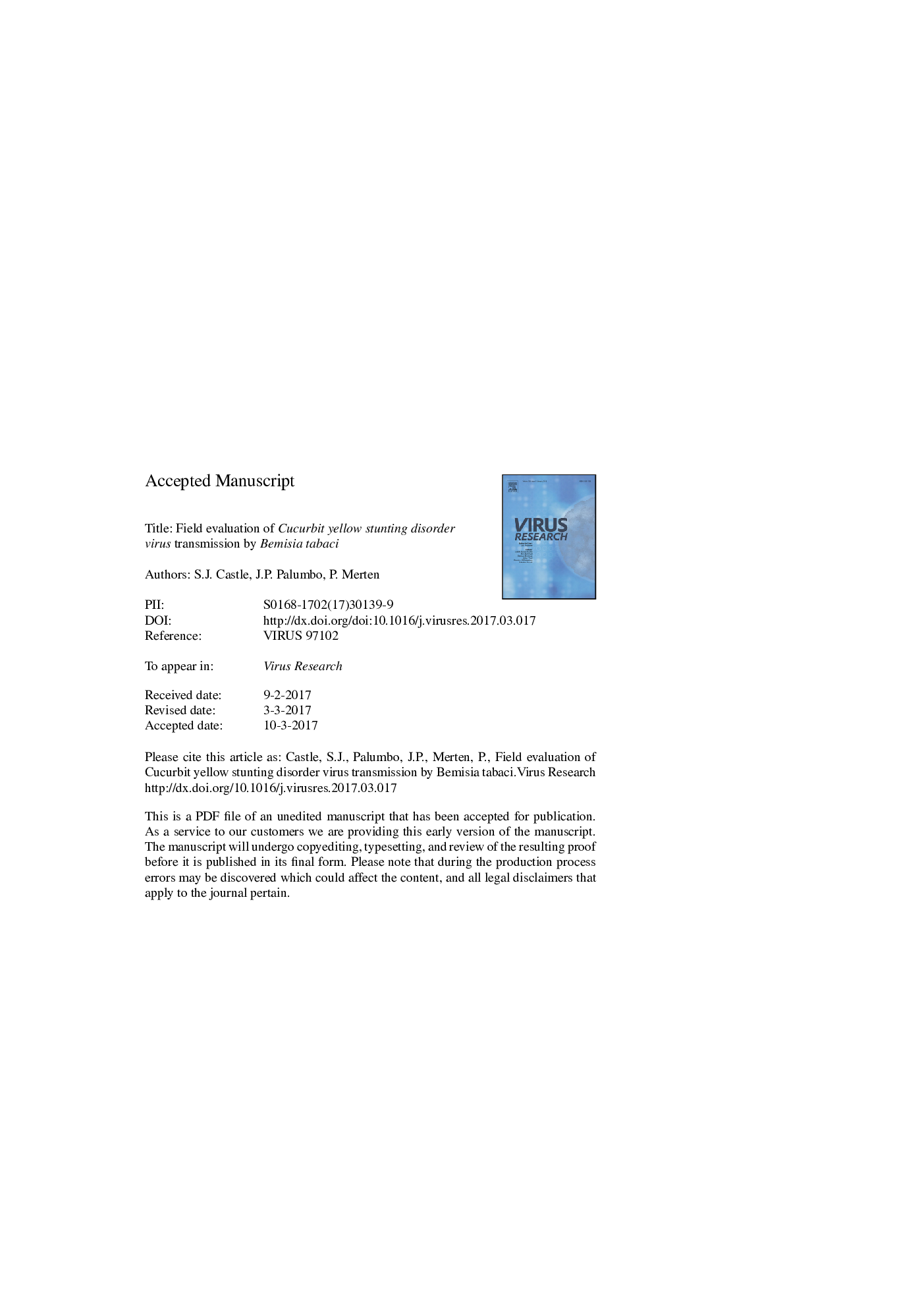| کد مقاله | کد نشریه | سال انتشار | مقاله انگلیسی | نسخه تمام متن |
|---|---|---|---|---|
| 8752129 | 1594316 | 2017 | 27 صفحه PDF | دانلود رایگان |
عنوان انگلیسی مقاله ISI
Field evaluation of Cucurbit yellow stunting disorder virus transmission by Bemisia tabaci
دانلود مقاله + سفارش ترجمه
دانلود مقاله ISI انگلیسی
رایگان برای ایرانیان
کلمات کلیدی
موضوعات مرتبط
علوم زیستی و بیوفناوری
ایمنی شناسی و میکروب شناسی
ویروس شناسی
پیش نمایش صفحه اول مقاله

چکیده انگلیسی
Cucurbit yellow stunting disorder virus (CYSDV) is a whitefly-transmitted Crinivirus (Closteroviridae) that impacts melon production in many parts of the world including the USA. It has been responsible for melon crop loss in the southwestern U.S. since 2006 when it was first identified. Control strategies have revolved mainly around chemical control, but research to identify suitable products and approaches to implementing them have lagged. The current study investigated the performance of four systemic insecticides in the field while concurrently tracking CYSDV disease progression after controlled and natural whitefly inoculation of young melon plants. Assessments of virus incidence were made using two different visual observation methods in concert with ELISA analyses of leaf disks samples collected biweekly. Infection rates were consistently lowest in plots treated with the butenolide insecticide flupyradifurone while dinotefuran was second in efficacy measures. Flupyradifurone also held whitefly densities to their lowest numbers relative to the other treatments. Two other insecticides, imidacloprid and cyantraniliprole, exacerbated virus incidence in multiple trials. Further investigation into the anomalous finding of increased virus incidence due to insecticide application is ongoing.
ناشر
Database: Elsevier - ScienceDirect (ساینس دایرکت)
Journal: Virus Research - Volume 241, 15 September 2017, Pages 220-227
Journal: Virus Research - Volume 241, 15 September 2017, Pages 220-227
نویسندگان
S.J. Castle, J.P. Palumbo, P. Merten,